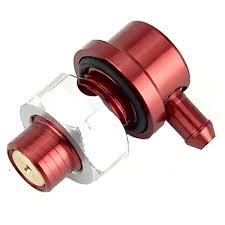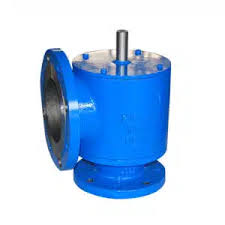TT7130/8130 Single Breather Valve

The Application of Single Breather Valve
Introducing the Single Breather Valve, also known as the Ventilation Valve or Pressure Release Valve. This essential component, manufactured by the reputable brand Cameron, finds paramount utility across various industries. Designed to regulate pressure differentials within enclosed systems, the Single Breather Valve ensures optimal functionality by allowing controlled airflow while preventing the entry of contaminants. With Cameron’s commitment to quality and innovation, their Single Breather Valve stands as a reliable solution for maintaining operational integrity in diverse environments, from industrial machinery to aerospace applications.
What Are The Types Of Single Breather Valve?
- Inline Single Breather Valve: This type is installed directly into a pipeline or system to regulate pressure differentials.
- Threaded Single Breather Valve: Designed with threaded connections for easy installation and removal, suitable for applications requiring periodic maintenance.
- Flanged Single Breather Valve: Equipped with flanges for secure attachment to pipelines or tanks, offering enhanced stability and reliability.
- High-Flow Single Breather Valve: Engineered to handle high volumes of airflow, ideal for systems with substantial pressure differentials.
- Adjustable Single Breather Valve: Featuring adjustable settings to fine-tune pressure relief according to specific requirements, providing greater flexibility in operation.
What Is Single Breather Valve?
The Single Breather Valve is a crucial component designed to regulate pressure differentials within enclosed systems. It allows controlled airflow while preventing the entry of contaminants, ensuring optimal functionality. Typically found in industrial machinery and aerospace applications, the Single Breather Valve plays a vital role in maintaining operational integrity.
How to Select the Right Single Breather Valve?
Selecting the right Single Breather Valve involves considering factors such as flow rate, operating pressure, and environmental conditions. Determine the required airflow capacity, ensure the valve can handle the system’s pressure range, and assess if it meets any specific environmental or regulatory requirements. Consulting with a knowledgeable supplier can also aid in selecting the most suitable Single Breather Valve for your application.
Features of Single Breather Valve
- Pressure Regulation:
- The Single Breather Valve efficiently regulates pressure differentials within systems, ensuring optimal performance.
- Contaminant Prevention:
- It effectively prevents the entry of contaminants, safeguarding the integrity of the system.
- Versatile Applications:
- Suitable for various industries, including industrial machinery and aerospace, due to its versatile functionality.
- Durable Construction:
- Constructed from durable materials, ensuring longevity and reliability even in harsh environments.
- Easy Installation:
- Designed for straightforward installation, facilitating quick integration into existing systems.
- Low Maintenance:
- Requires minimal maintenance, reducing downtime and operational costs for the user.
- Adjustable Settings:
- Some models offer adjustable settings to fine-tune pressure relief according to specific requirements.
- Compatibility:
- Compatible with a wide range of systems and pipelines, offering flexibility in application.
Advantages and Disadvantages of Single Breather Valve
Advantages:
- Efficient Pressure Regulation:
- Ensures precise control over pressure differentials within systems, optimizing performance.
- Contaminant Prevention:
- Effectively blocks the entry of contaminants, safeguarding system integrity and longevity.
- Versatility:
- Suitable for a diverse range of industries and applications, offering flexibility in use.
- Reliability:
- Constructed from durable materials, providing long-lasting and dependable performance.
- Easy Installation:
- Designed for straightforward installation, reducing setup time and effort.
Disadvantages:
- Limited Pressure Range:
- Some models may have limitations in handling extreme pressure differentials.
- Maintenance Needs:
- Requires periodic maintenance to ensure continued efficiency and functionality.
- Cost:
- Initial investment costs may be higher compared to simpler pressure relief solutions.
- Space Requirements:
- Requires sufficient space for installation, which may be a constraint in compact systems or applications with limited space.
- Complexity:
- More complex than basic pressure relief mechanisms, requiring careful selection and setup.

The Specifications of Single Breather Valve
| Specification | Details |
|---|---|
| Type | Single Breather Valve |
| Ball Material | Stainless Steel |
| Attachment Type | Threaded |
| Thread Standard | NPT (National Pipe Thread) |
| Thread Size | 1/2 inch |
| Body Material | Brass |
| Safe for Use With | Air, Water, Oil |
| Handle Type | Lever |
| Handle Material | Zinc Alloy |
| Maximum Working Pressure (psi) | 150 psi |
| Maximum Working Pressure (bar) | 10.3 bar |
| Operating Pressure | 5-100 psi |
The Installation Steps for Single Breather Valve
- Prepare the Installation Site:
- Choose a suitable location on the pipeline or system where the Single Breather Valve will be installed.
- Ensure the area is clean and free from debris to prevent contamination.
- Check Valve Compatibility:
- Verify that the Single Breather Valve is compatible with the pipeline or system specifications, including thread size and type.
- Shut Down the System:
- Turn off the flow of media (such as air, water, or oil) within the system to prevent leaks during installation.
- Prepare the Valve:
- Inspect the valve to ensure it is free from damage and defects.
- Apply any necessary sealant or thread tape to the valve threads to ensure a tight seal.
- Install the Valve:
- Align the valve with the designated installation point on the pipeline or system.
- Hand-tighten the valve into place, ensuring it is securely attached.
- Finalize Installation:
- Use a suitable wrench to further tighten the valve, being careful not to over-torque.
- Double-check the valve alignment and connections to ensure proper installation.
- Test the Valve:
- Gradually restore the flow of media within the system to test the valve’s functionality.
- Monitor for any leaks or irregularities and address them promptly if detected.
- Document Installation:
- Keep records of the installation process, including the date, location, and any relevant notes for future reference.
The Operation Theory of Single Breather Valve
- Single Breather Valve:
- The Single Breather Valve operates on the principle of pressure differentials. When the pressure inside the system exceeds the desired level, the valve opens to release excess pressure, preventing potential damage or malfunction.
- Conversely, when the pressure inside the system decreases, the valve closes to maintain the required pressure level, ensuring optimal performance and functionality.
- Its design allows for controlled airflow while blocking the entry of contaminants, safeguarding the integrity of the system.
- Exhaust Valve:
- An Exhaust Valve serves a similar purpose to the Single Breather Valve but is specifically designed to release excess air or gas from a system.
- When the pressure inside the system surpasses the predetermined threshold, the Exhaust Valve opens, allowing the excess air or gas to escape.
- This helps prevent over-pressurization and potential damage to the system components, ensuring safe and efficient operation.
- Air Valve:
- The Air Valve, also known as an Air Release Valve, is primarily used in liquid systems to release trapped air or gases, preventing air pockets that can disrupt flow and cause inefficiencies.
- Similar to the Single Breather Valve and Exhaust Valve, the Air Valve operates based on pressure differentials. When air accumulates in the system, the valve opens to release it, maintaining optimal fluid flow.
- By removing trapped air, the Air Valve helps prevent corrosion, cavitation, and other issues that can compromise system performance and longevity.
